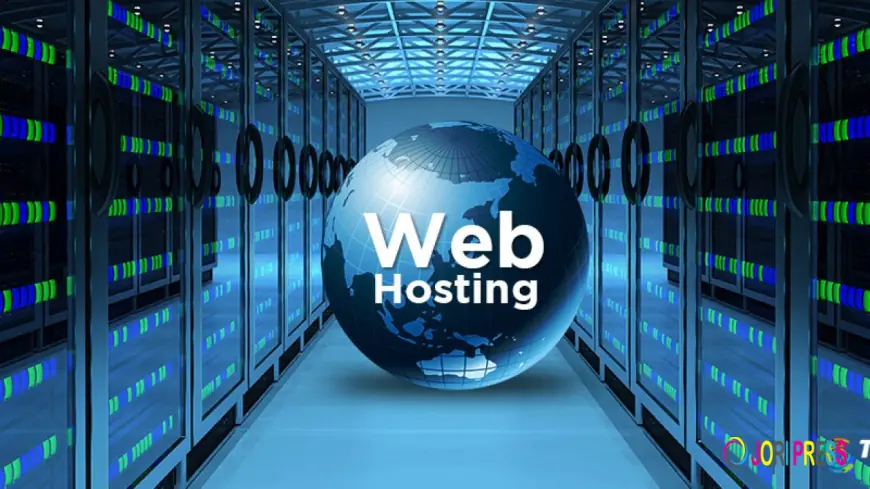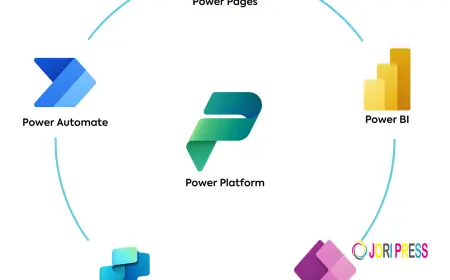The Power Behind the Cloud: How Choosing the Right Cloud Provider Shapes the Future of Business
The Power Behind the Cloud: How Choosing the Right Cloud Provider Shapes the Future of Business

Introduction: The Backbone of the Digital Era
In today’s fast-evolving digital landscape, businesses no longer ask if they should move to the cloud—it’s about which cloud provider can best drive their success. From startups to multinational enterprises, the demand for flexibility, scalability, and security has made cloud computing the cornerstone of modern innovation. But as organizations grow increasingly dependent on digital infrastructure, the choice of a becomes one of the most crucial strategic decisions they’ll make.
This article explores what makes a great cloud provider, the factors driving their importance, and how the right choice can unlock new possibilities for growth, innovation, and resilience in the digital age.
1. What Is a Cloud Provider and Why It Matters
A cloud provider is a company that delivers computing services—such as servers, storage, databases, networking, analytics, and software—over the internet (“the cloud”). These services replace the need for costly physical infrastructure, allowing businesses to scale resources on demand.
Cloud providers enable organizations to:
-
Access powerful computing resources from anywhere.
-
Reduce IT costs by eliminating on-premise hardware.
-
Increase agility by rapidly deploying new solutions.
-
Enhance collaboration and data security.
Simply put, the cloud provider acts as the backbone of digital transformation, offering the foundation for everything from web applications to artificial intelligence and big data analytics.
2. The Growing Importance of Cloud Providers in Business Strategy
In an era defined by remote work, digital customer experiences, and data-driven decision-making, the role of cloud providers has become more critical than ever. They are not just service vendors—they’re strategic partners enabling innovation.
Some key reasons for their growing importance include:
-
Scalability: Businesses can adjust resources in real-time to match fluctuating demands.
-
Resilience: Cloud infrastructure ensures business continuity, even during unexpected disruptions.
-
Speed to Market: Developers can deploy and test applications faster than ever before.
-
Sustainability: Leading cloud providers invest heavily in renewable energy to power their data centers, helping companies meet environmental goals.
Choosing the right provider isn’t just a technical decision—it’s a business imperative that directly affects efficiency, innovation, and long-term competitiveness.
3. Key Features to Look for in a Cloud Provider
When evaluating a cloud provider, it’s essential to look beyond pricing. The right partner offers a balanced combination of reliability, security, flexibility, and performance. Below are the most critical factors to consider:
a. Security and Compliance
Data protection is non-negotiable. A top-tier cloud provider ensures robust security measures, including encryption, multi-factor authentication, and compliance with international standards such as ISO 27001 and GDPR.
b. Reliability and Uptime
Downtime can be disastrous for any business. Reliable providers guarantee high uptime—usually 99.9% or more—backed by solid service-level agreements (SLAs).
c. Scalability and Performance
The ideal provider allows you to scale seamlessly without affecting performance. Whether you’re handling a few users or millions, the system should adapt effortlessly.
d. Cost Efficiency
Pay-as-you-go models make the cloud accessible, but hidden costs can add up. Transparent pricing and flexible billing are vital for long-term sustainability.
e. Customer Support
Responsive, expert support can make a world of difference, especially for small businesses without in-house IT teams. A provider offering 24/7 technical assistance ensures peace of mind.
4. The Top Cloud Providers Leading the Market
The global cloud industry is dominated by a few major players, each offering unique strengths:
-
Amazon Web Services (AWS): Known for its massive ecosystem and reliability, AWS is the industry leader in cloud computing.
-
Microsoft Azure: Offers seamless integration with Microsoft products, making it ideal for enterprises using Windows environments.
-
Google Cloud Platform (GCP): Specializes in data analytics, AI, and machine learning capabilities.
-
IBM Cloud: Focuses on hybrid cloud solutions for businesses seeking flexibility and security.
-
Alibaba Cloud: A fast-growing provider with strong infrastructure across Asia and expanding global reach.
While these giants dominate the space, smaller niche providers are also emerging, offering specialized solutions tailored to specific industries or technologies.
5. The Future of Cloud Providers: Innovation Beyond Infrastructure
Cloud providers are evolving rapidly, moving beyond simple infrastructure offerings toward more advanced, intelligent services. The next frontier includes:
-
Artificial Intelligence and Machine Learning (AI/ML): Cloud platforms now deliver AI-powered tools that help businesses analyze data, automate processes, and enhance customer experiences.
-
Edge Computing: Providers are bringing data processing closer to users, reducing latency and improving real-time decision-making.
-
Hybrid and Multi-Cloud Solutions: Companies increasingly use multiple cloud providers to diversify risk and optimize costs.
-
Sustainability Initiatives: Many providers are committing to carbon neutrality and investing in energy-efficient data centers.
This transformation means businesses can innovate faster and smarter while reducing environmental impact—a win for both progress and planet.
6. Challenges in Choosing the Right Cloud Provider
Despite the many benefits, selecting a cloud provider isn’t without its challenges. Common hurdles include:
-
Vendor Lock-In: Once integrated, switching providers can be complex and expensive.
-
Data Privacy Concerns: Storing sensitive data on third-party servers raises regulatory and ethical issues.
-
Integration Complexity: Migrating legacy systems to the cloud requires time, planning, and expertise.
-
Cost Overruns: Poorly managed resources can lead to unexpected bills.
To overcome these challenges, businesses should perform thorough evaluations, conduct pilot projects, and ensure their chosen provider aligns with both technical and strategic objectives.
7. Making the Right Choice: Aligning Cloud Providers with Business Goals
Choosing the right cloud provider isn’t just about technology—it’s about partnership. Businesses should assess how each provider supports their goals for innovation, customer experience, and scalability.
Ask key questions like:
-
Does the provider understand my industry’s unique needs?
-
How does their roadmap align with my business growth?
-
Can they offer the flexibility to evolve with changing technologies?
A well-matched provider not only supports current operations but also becomes a trusted ally in future growth.
Conclusion: The Cloud Provider as a Catalyst for the Future
As digital transformation accelerates, cloud providers are more than service enablers—they are the engines of progress. The right cloud provider can help businesses innovate faster, operate smarter, and compete more effectively in a connected world.
The future belongs to organizations that choose wisely—those that partner with cloud providers who not only deliver technology but also inspire transformation. In the coming years, the line between infrastructure and intelligence will blur even further, and cloud providers will continue to be the silent force driving the evolution of every industry.
In essence, the cloud is no longer just a tool—it’s the foundation of the modern world. And behind every great innovation lies a great cloud provider.
What's Your Reaction?
 Like
0
Like
0
 Dislike
0
Dislike
0
 Love
0
Love
0
 Funny
0
Funny
0
 Angry
0
Angry
0
 Sad
0
Sad
0
 Wow
0
Wow
0




















































